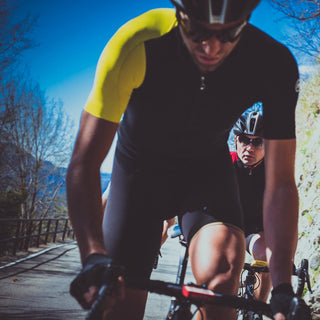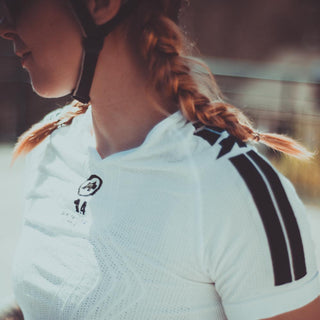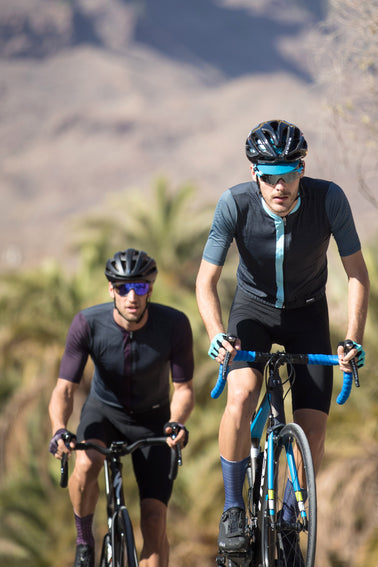We're avid cyclists who understand the importance of safety on the road. That's why we're discussing high-visibility bicycle clothing. It's not just about looking stylish; it's about being seen.
We'll cover different types of reflective gear, how bright attire enhances safety, and how to choose the perfect outfit for your rides. Let's ensure we're not just cycling but cycling safely.
Importance of High-Visibility Clothing
While cycling, we must wear high-visibility clothing, as it significantly increases our chances of being seen by other road users. It's not just about being seen; it's about being seen in time for drivers to react appropriately. We can't stress enough the need to take responsibility for our safety on the road.
High-visibility clothing is designed with reflective materials that bounce back light, making us more visible in low-light conditions. We're not just talking about nighttime here. Dusk, dawn, foggy, rainy or snowy conditions can all significantly reduce visibility. Wearing high-visibility clothing can make a huge difference in these situations.
Contrary to what we might think, even on a clear day, high-visibility clothing can help. We might think we're visible, but drivers have much to focus on. We must do everything possible to stand out; high-visibility clothing can help.
We've all had close calls on the road. We've seen cars that didn't notice us until the last second. We've had cars pass us too closely. We don't want to be a statistic, and high-visibility clothing is one thing we can do to reduce our risk.
We shouldn't underestimate the importance of high-visibility clothing. It's an easy step we can take to increase our safety. So, let's make it a habit; whenever we get on our bikes, let's light up the road and be seen.
Different Types of Reflective Gear
Now that we've understood the importance of wearing high-visibility clothing let's explore the various reflective gear available for cyclists.
The range is wide, and there's something for every rider's need and style preference.
First up, we've got reflective vests. These are lightweight and easy to wear over your normal cycling attire, providing a large reflective surface area. They're perfect for late-night or early-morning rides when visibility is most compromised.
Next, consider reflective arm and leg bands. They're inexpensive, lightweight, and easy to carry. More importantly, as your legs and arms move while cycling, the reflection catches attention, making you more noticeable to motorists.
Reflective gloves and shoe covers keep you warm in cooler weather and enhance visibility. The motion of your hands while signalling and your feet while pedalling can draw drivers' attention.
Another essential is a reflective helmet cover. It's an excellent way to increase your visibility from all directions. Plus, it adds an extra layer of protection to your helmet.
Don't forget about reflective stickers and tapes. They can be easily added to your bike frame, helmet, and backpack. They're a simple and cost-effective way of increasing your visibility.
Lastly, consider adding spoke reflectors to your bicycle wheels. They add a spinning light effect when headlights hit them, making you more noticeable on the road.
Enhancing Safety With Bright Attire
Our bright attire on our bike rides is vital in enhancing our safety. It's not just about style or making a fashion statement; it's about ensuring others see us on the road. This is especially important during periods of low visibility, such as dusk, dawn, or inclement weather.
High visibility clothing, or 'Hi-Vis', as we cyclists often call it, is designed to help us stand out. It's typically made in neon or fluorescent colours like yellow, orange, or green. Why these colours? They're scientifically proven to be the most noticeable to the human eye. Brightly coloured attire isn't a recent trend. It's a safety measure we've incorporated into our gear to mitigate the risks of cycling.
Now, there's more to Hi-Vis clothing than just bright colours. Reflective elements are also crucial. These elements, usually stripes or patches, reflect light to their source, making us more visible to drivers at night or in low-light conditions.
We can't stress enough how vital it is to incorporate Hi-Vis clothing into our cycling wardrobe. It's not merely about personal preference; it's a matter of life and death. As cyclists, we share the road with motorists who might be distracted or not expecting to see us. High visibility attire is a simple, effective way to catch their attention and keep us safe.
Choosing Your Ideal Cycling Outfit
Although we've established the importance of Hi-Vis clothing, it's also essential that we choose the right cycling outfit to maximize comfort and performance. When selecting our gear, we must consider the three F's: Fit, Fabric, and Functionality.
The fit is crucial as it impacts our comfort and efficiency on the bike. We should aim for a snug fit to reduce air resistance but not too tight to restrict movement or cause discomfort. It's always a balance!
Fabric is another significant factor. We need breathable, quick-drying materials and some wind and rain protection. High-tech synthetic fabrics, like polyester and nylon, are excellent choices as they wick away sweat, keeping us dry and comfortable.
Functionality can't be overlooked. We should opt for outfits with practical features, such as pockets for essential items, grippers to keep the clothes in place, and zippers for ventilation. Reflective elements for visibility are a must, especially for nighttime or low-light rides.
Then there's the matter of style. We want to look good while out there, don't we? A stylish outfit can boost our confidence and make our rides more enjoyable. However, style should never compromise safety or comfort.
Lastly, let's not forget about the helmet. It's not directly part of the outfit, but it's a crucial accessory for safety. Choose a helmet that's comfortable, well-ventilated, and, of course, highly visible.
Choosing the right cycling outfit is crucial for our safety on the roads. Let's prioritize visibility, not just for ourselves but for other road users. Remember, it's not just about looking good; it's about being seen. Stay safe, be bold, and let's keep pedalling towards a safer cycling future.




